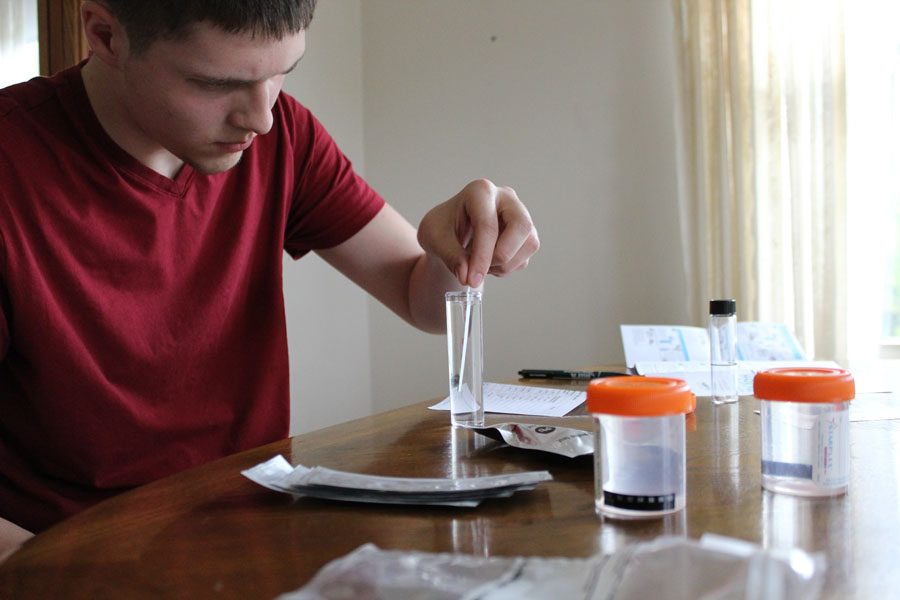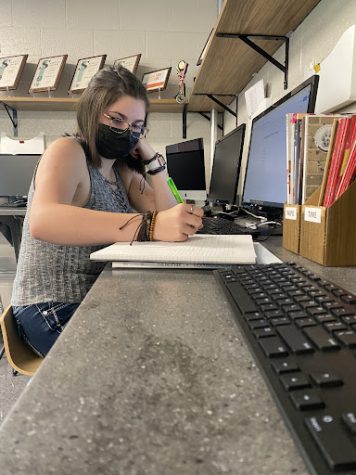Water Welfare
High school drinking water put to the test
As students prepare for their final exams, Uncaged decided to administer a test of its own. Lead, bacteria, nitrates, pH and chlorine were all subjects included in Stockbridge High School’s drinking water safety review.
Water safety is obviously a current, hot button issue in the Mitten due to the Flint Water Crisis. This heated set of circumstances elicits the boiling question, “How safe is my own drinking water?” Now, more than ever, warrants a thorough investigation into the quality of high school fountain water.
Using sterile containers, samples of drinking water were collected on May 19 from drinking fountains across the school. Soon after, the test began.
Drinking water quality is judged in several aspects, all of which have different effects on the sample. For example, if hydrogen sulfide is present in water, then it emits an odor not unlike rotten eggs. Fortunately, this is not an issue for Stockbridge High School fountains.
The first result elicited from the self-test determined the hardness of the water. Hardness is the amount of dissolved calcium and and magnesium present in the water. Hard water is not a danger to humans; however, it becomes apparent at higher levels as residue spots on dishes and glassware. Hard water can also be identified as it may leave a film on the surfaces it passes over, according to the U.S. Geological Survey, the sole science agency for the Department of the Interior that provides science about the natural hazards that threaten lives and livelihoods.
Water from the school drinking fountain showed a very low hardness, well within the Environmental Protection Agency’s (EPA) standard guideline of 50 ppm (parts per million) or less.
The next criteria under scrutiny was chlorine level. Chlorine is commonly used disinfect water, preventing the growth of bacteria, viruses and other assorted contaminates. The drinking fountain water sample showed no traces of chlorine, the EPA safe amount being less than 4 ppm.
Additionally, the samples were tested for iron and copper. However, little to none was found, once again proving that the school’s water falls well within acceptable amounts according to EPA standards.
A test of pH also followed this trend, displaying a reading of 7, exactly where water typically falls on the scale. Ph is the measurement of how basic or acidic any solution is. EPA standards allow for fluctuation between 6.5 and 8.5 on the pH scale, 6.5 being slightly more acidic than normal and 8.5 being slightly more basic.
Stockbridge water continued to ace its test, showing no traces of nitrite and nitrate, which are inorganic ions formed by oxidized ammonia, originating from the decomposition of organic materials. This is one of the most important tests to pass, as nitrite “changes the normal form of hemoglobin, which carries oxygen in the blood to the rest of the body, into a form called methemoglobin that cannot carry oxygen,” according to the New Hampshire Department of Environmental Services. In severe cases, consuming untreated water can result in eventual suffocation and death due to lack of oxygen. EPA standards demand total nitrate and nitrite levels to be below 10 ppm.
Following up nitrate and nitrite, three more important parameters were also tested: lead, pesticides and total coliform bacteria. Coliform bacteria are used as an indicator species by water analysts, becoming apparent in water supplies when possible fecal contamination occurs or when pathogenic bacteria are present.
Fortunately for students and faculty at the high school, all tests came back negative. In fact, overall, the fountain water passed its examination with flying-colors. The only parameter that was slightly out of the ordinary, was the water’s alkalinity, which is water’s ability to buffer an acid. The water sample tested a little higher than usual, but the result carries no health concerns.

James had been a part of the Uncaged Student News staff for the past three years. This year he is the Content Editor. James enjoys playing soccer, watching...








